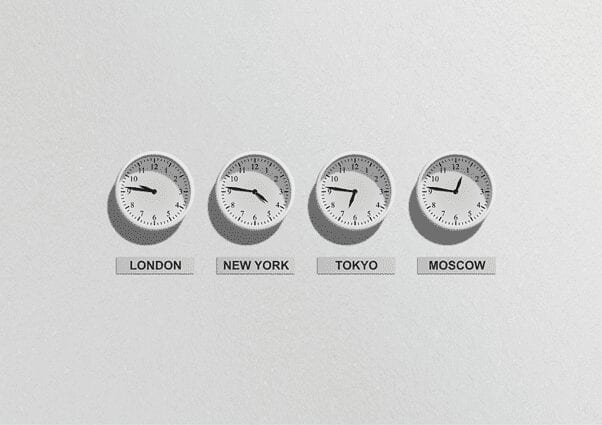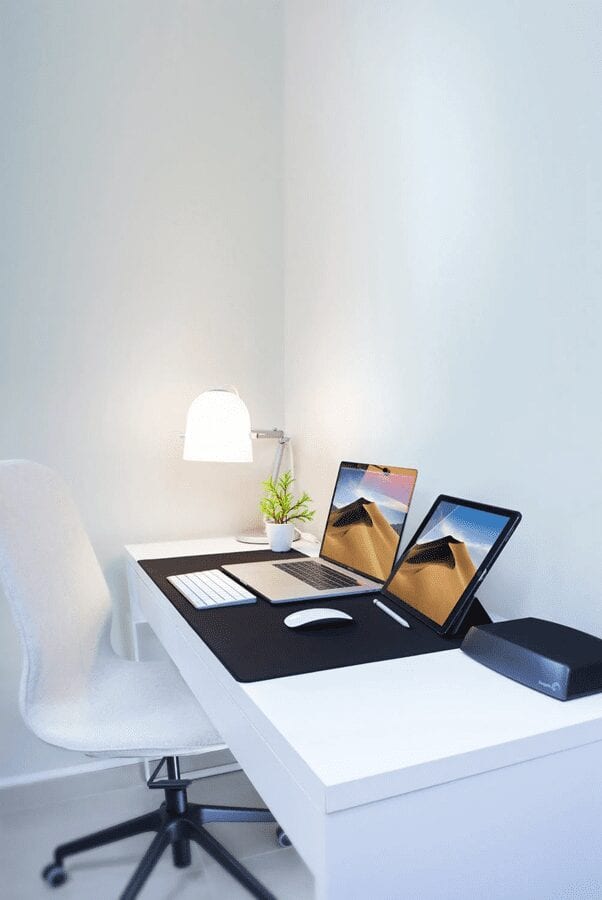|
|
For many people, being able to work remotely – and escaping the confines of a cubicle or open office – seems like a dream. It has been talked about as a way to boost job satisfaction, reduce stress, and even increase productivity. But what used to be seen as a perk is becoming more of a necessity. And what was once considered a dream, maybe turning into more of a nightmare for some. As some companies fully embrace a remote working environment and have done away with a physical office altogether, some companies and employees have had a remote working environment thrust upon them as we saw in 2020 and the trend will likely continue, as 59% of people believe they will still work remotely at least part-time going forward.
Companies that are built for remote working generally have practices in place that promote a healthy work-life balance which can include a more flexible schedule and respecting the employee’s “off” time. However, for employers that have newly implemented a remote working system, it often means that the workdays have lengthened by up to 3 hours, destroying any semblance of a work-life balance that may have existed before as employees feel that they always need to be available. In a survey, 75% of remote workers said that they have experienced burnout, and this includes those that have had to transition from the office to a remote workplace, those that work remotely part-time, and those that have already been working remotely. This shows that remote working burnout can even impact everyone.
Since burnout is a term that’s used pretty frequently, and seemingly even more so recently, it’s a good idea to understand what the term actually means compared to regular work stress. We will go through the definition and description of burnout, why it is a problem, as well as how you can prevent burnout while working remotely, whether you are working from home or working while travelling as a digital nomad.
What is burnout?
The term “burnout” was originally coined in the 1970s by the American psychologist Herbert Freudenberger in which he described people working in helping professions like doctors and nurses who made big sacrifices for the common good per se that dealt with the consequences of prolonged and severe stress.
The repercussions of this included exhaustion, listlessness, and being unable to cope. It’s now used more commonly and includes those that work in various professions from business professionals to musicians. While it’s used more widely, surprisingly there is not a consensus by experts on what exactly defines burnout. Consequently, how widespread burnout actually is can be difficult to define.

Signs and Symptoms of Burnout
- Reduced performance: It can affect both common tasks at work as well at home. Individuals experiencing burnout often are very negative about their tasks, don’t have any interest in doing things that they once were interested in, as well as not being able to concentrate on tasks.
- Alienation in the workplace: Those that experience burnout can feel increasingly cynical about their work and workplace, begin to have disdain for their coworkers, and find their work to be more and more frustrating and stressful.
- Exhaustion: Being lethargic and emotionally drained are common occurrences in those affected. It can also include physical aspects like stomach pain.
Why is it a problem?
The signs and symptoms of burnout can look a bit like depression but it is not quite the same. It’s different from depression in that negative feelings of depression often go beyond the scope of work and can include low self-esteem, hopelessness, and suicidal tendencies. However, people experiencing burnout can be at a higher risk for developing depression, and that there is a strong burnout-depression overlap.
Additionally, burnout is linked to other health problems and is a significant predictor of other physical consequences. These include coronary heart disease, increased headaches, respiratory problems, type 2 diabetes, and others.
What to Do to Prevent Remote Working Burnout
So, burnout is something that should be taken seriously and addressed before it can take hold. Taking early action and practicing positive stress management techniques are all ways that you can prevent remote working burnout.
In this context, it’s very important to be secured by a medical insurance. For digital nomads, there are some providers like SafetyWing who offer travel and medical packages.
Here are 14 ways that you can do that. Hopefully, they can work for you!
1. Develop time boundaries
Maintaining boundaries regarding your time and availability for work is crucial for your overall well-being and work performance. Set your work schedule and abide by it. This can be difficult because you are never really “out of the office”. When you are working remotely there is no strict delineation between your workplace and social space. You don’t have the morning commute or office routine that may get you into the work mode.
To address this you can make your own routine or ritual that signifies when your workday actually begins and ends. This could include having a designated workstation (more on that later), and keeping your work laptop in a drawer or closet, or pretty much just anywhere that is “away”.
Depending on the flexibility of your job, the implementation of this could also be hampered by your employer’s own scheduling rules and may require further discussion. But some things to consider are letting people know that you will be slower to respond to emails or having a stricter approach of turning on automated out-of-office replies on your email when you are not working.

2. Develop social boundaries
Just as it’s necessary to set boundaries regarding when you are working, you also need to set boundaries on when you can be social. Your friends and family should be aware that just because you are not working in an office does not mean that you are available to be social at any time.
3. Turn off email and work notifications “after hours”
It is very important that you give yourself time in which you are not available. By turning off your notifications you can give yourself a much-needed break from your work and allow yourself to rest. Let people know beforehand what your schedule is like and that you will turn off your notifications so that they know what they can expect from you.

4. Ask your boss for flexible scheduling
If your job doesn’t already allow for flexible scheduling, it could be a good thing to bring up. The reason that it wasn’t automatically implemented or allowed was that your employer was not accustomed to or had thought of implementing it.
5. Try to maintain a separation between work and home life
Similar to setting your social and temporal boundaries, creating a separation between your work life and home life is important to stay in a good mindset. You should aim to keep your routine on the days that you work. While it can be very tempting to stay in your pajamas all day, things like this can blur the lines between work and home and can have negative consequences on your ability to work effectively and also to enjoy your free time.
6. Go for a walk
Whether you are working from home or an Airbnb, it’s pretty likely that you won’t have any sort of real commute to work if you work remotely. So, while taking a walk around the block before your start working sounds a bit weird, it may not be too crazy! For some people, a fake commute which can include even just a short walk can help to promote good mental health!
Working remotely can lead to a more sedentary life. And by taking one or two small walks throughout the day you can not only help your mental health, but you can also help to reduce stress and clear your head.

7. Take regular breaks
Whether or not you go for a walk on your breaks is up to you, but it is a good idea to take a short break every hour or so. It’s too easy to get consumed in your work and end up working for hours straight. Such long periods of work without any break can lead to early exhaustion.
If you are having trouble remembering to do it, try scheduling your breaks and short periods for exercise, a coffee or tea, and most importantly, lunch. During your lunch break, don’t forget about the “break” part. Set aside the full lunchtime to eat without working and decompress a bit to help yourself perform well the rest of the day.
8. Take the occasional day off
No matter if you are just working from home part-time, or if you are a digital nomad working on a beach in Aruba, if you are working 40 or more hours a week for weeks or months on end, you deserve the occasional vacation. It can just be a day or two off or it can be a full-blown vacation period where you don’t worry about work at all for a week or two.
Taking such breaks is important to relax and enjoy other things in life that aren’t work-related. It also gives you the chance to look forward to something and work towards it, which can be beneficial for your mental health to prevent remote working burnout.

9. Don’t work on the weekends
It’s very easy to fall into the trap of working on the weekend while working remotely. If you aren’t doing anything else you may feel obligated to put in some extra work. Don’t do it! Give yourself a much-needed two-day break from the weekday grind. Non-stop work for days on end is one of the main drivers of burnout.
10. Eat Well
This is a piece of advice that both office workers and remote workers should keep in mind. Far too often we succumb to making bad dietary choices. We eat fast-food, foods high in preservatives and that provide little nutritional value, and while they are convenient and quick (so we can get back to doing more work!) they are not good for the body or soul.
Take the time to cook something, or at the very least buy something that is not from a drive-through window. Then, enjoy it. As previously mentioned, your lunch break should be for lunch and maybe a chat with your friends or family and not work.

11. Set up a dedicated workplace
This is partially an extension of setting up your boundaries between your work time and your off time. It can be super easy to stay in your pajamas and try to work on the couch but in reality, you will most likely just be procrastinating the day away. If you have a roommate or family members in the house this also can signify when you’re at work and should be left alone. The workspace should be where your workday begins and where it ends.
12. Communicate with your colleagues
Do you miss the casual conversation around the coffeemaker? While the coffeemaker may not be there, it doesn’t mean that your daily chit-chat has to go along with it. By keeping these kinds of social routines in place it can help to keep you in the working mindset and promote a positive remote working environment.
And if your job has always been remote then it can be a good way to stay connected to your coworkers (if you have them) and not talk about the usual work stuff that tends to dominate the workday conversations. It can also help you to avoid feeling alone or isolated, especially if you are more of the extrovert type who thrives on social interaction.
13. Keep an eye out for burnout symptoms
Now that you are aware of some of the symptoms that accompany burnout, it is a good idea to be mindful of how you are feeling. If you think that you could be reaching the point of burnout it is important to take a step back and incorporate more healthy practices into your life. This leads us to the last point.

14. Take a mental health screen
If you feel like your stress is unmanageable or you have other mental health concerns, take a free and anonymous mental health screen here.
Conclusion
While remote working can have many perks, there can be some risks that come along with it. Take care of yourself and the work that you do. We hope that by taking these positive steps, you can prevent remote working burnout.













